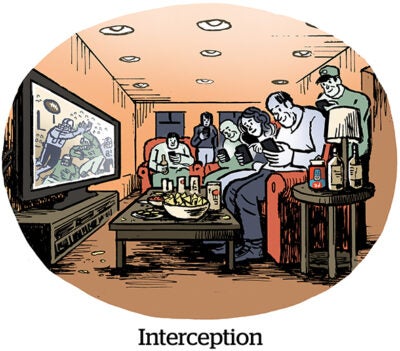Here’s today’s AdExchanger.com news round-up… Want it by email? Sign up here.
Empty Shop
Streaming TV has a problem, because so many pillars for monetization require consumer adoption but aren’t very popular.
The glaringly obvious example is ads themselves. Streaming audiences seem to revile ads, even in small doses. But consumers can’t avoid ads, really, so that’s still going to work out.
Another big streaming opportunity with adoption challenges is shoppable TV.
Shopping networks like QVC and HSN, which focus on livestreams, don’t translate exactly to the on-demand nature of CTV. QR codes, too, would be a dream for broadcasters and advertisers seeking to make TV shoppable. But they need audiences to actively engage.
Paramount+ is a pilot partner of Shopsense AI, a shoppable TV startup co-founded by Amazon’s former head of shoppable ads for Alexa and the guy who started the Klarna Retail Media Network, Ad Age reports.
Shopsense is framed as a customer experience benefit for viewers who want to go from their movie or show to a shopping portal.
“More broadly, shoppable TV is one way for traditional media companies to get in on the retail media craze,” writes Ad Age.
The thing is, shoppable TV needs a better reason to exist.
Pay Up To Pay Down
Streaming services are all-in on password-sharing bans. But they’re not doing it to create more subscribers; it’s the advertisers they want.
Netflix was the first platform to require paid account sharing, hoping to force moochers to sign up for their own (cheaper, ad-supported) accounts.
Netflix’s subscriber numbers have spiked – as expected, since the AVOD subscription is cheaper. But that means all its competitors are copying the playbook, starting with Disney and Max.
Disney+ launched anti-account sharing in Canada in the fall, while Hulu introduced the restriction in March.
This summer, Disney+ is rolling out password-sharing bans worldwide, CEO Bob Iger tells CNBC. It will start with a few countries in June, followed by a “full rollout in September.”
Disney doesn’t just want subscribers – it wants ad-supported subscribers. Scale is the first thing advertisers consider for campaign planning, and with unprecedented competition in the upfronts starting next month, it’s no wonder Disney regularly reminds advertisers that half of new Disney+ subscribers sign up with ads.
Amazon will also be one of the more formidable competitors for TV ad dollars this year, after defaulting nearly 115 million Prime Video subscribers to ad-supported memberships in January.
Out Of The Blue
“Bluey,” an Australian kids show, is the world’s largest and unlikeliest hit franchise. Its story reflects how profit and retention concerns collide with creative production.
For one thing, “Bluey” – not Disney or Marvel – is the backbone of Disney+ right now. It’s the number two show overall in the past year, Bloomberg reports, trailing only Suits on Netflix.
Except Disney doesn’t make much on “Bluey,” except as compelling, exclusive content. BBC Studios won international distribution (as in, outside Australia) and global licensing rights back in 2019, when the show was in dire funding straits.
Nickelodeon execs coveted “Bluey,” apparently, but were foiled because Paramount+ already carried … “Blue’s Clues,” another preschool franchise featuring a blue dog.
Disney would pay billions for the franchise, but there are only three “Bluey” seasons of short episodes. Also, the enigmatic creator of “Bluey” appears liable to stop.
Apparently, it’s become a problem at Disney parks, where kids expect to meet Disney princesses, the Star Wars crew and … Bingo and Bluey.
“This is Disney to kids right now,” says Scott Gustin, a writer who covers theme parks. “People are 100% wondering why there’s no tie-in to Bluey on the property.”
But Wait, There’s More!
Publishers use AI chatbots to upgrade site search. [Digiday]
Revenue churn is a metric worth monitoring at media agencies. [Madison and Wall]
Snap expects about $65 million in political ad revenue this year, way up from previous cycles. [Business Insider]


















